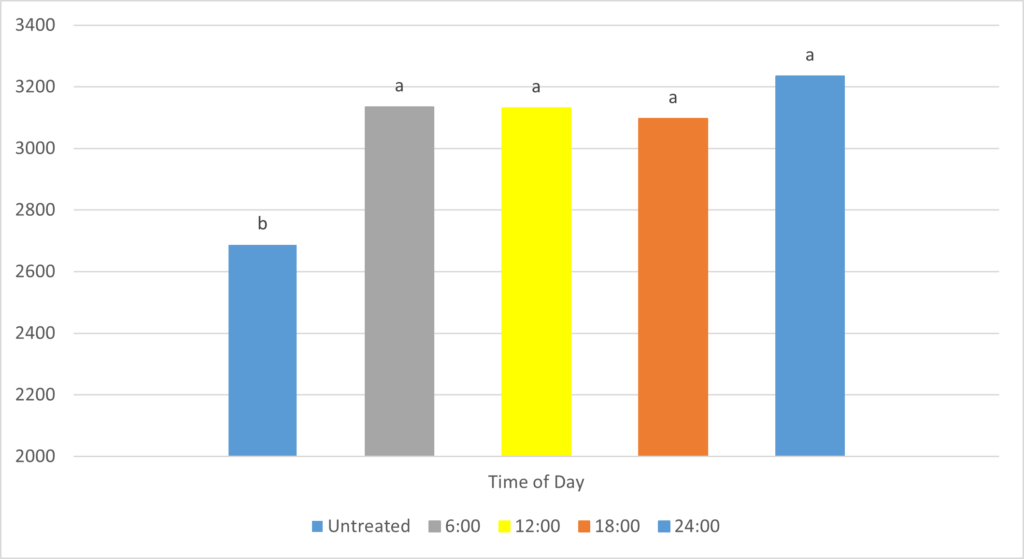Sprayer technology is available to apply pesticides at any time – day or night. Some growers rely on this technology to manage a larger crop area. Previous studies have found herbicides such as glyphosate are more effective when applied at certain times of the day. This study looks for a similar response from four day/night fungicide timings for the control of white mold in dry beans in Ontario.
The fungicide Allegro (fluazinam) was applied at four daily timings (6:00, 12:00, 18:00 and 24:00 hours) to a susceptible cultivar (Beryl, Merlot or Viper) over 13 studies at Exeter ON between 2013 and 2021. Measurements included disease incidence and severity over time, crop yield and seed weight.

White mold infection varied, with eight of the studies recording more than 30% disease severity at harvest. There was no difference in crop yield for the four daily timings of Allegro, over all 13 studies (Figure 1). Each fungicide treatment had higher crop yield than the untreated control, due in part to larger seed size. This crop yield response was similar for a subset of studies (11 total) using the cultivar Beryl only, or a subset of studies (6 total) using Beryl with disease severity greater than 30%.
Chris Gillard, University of Guelph